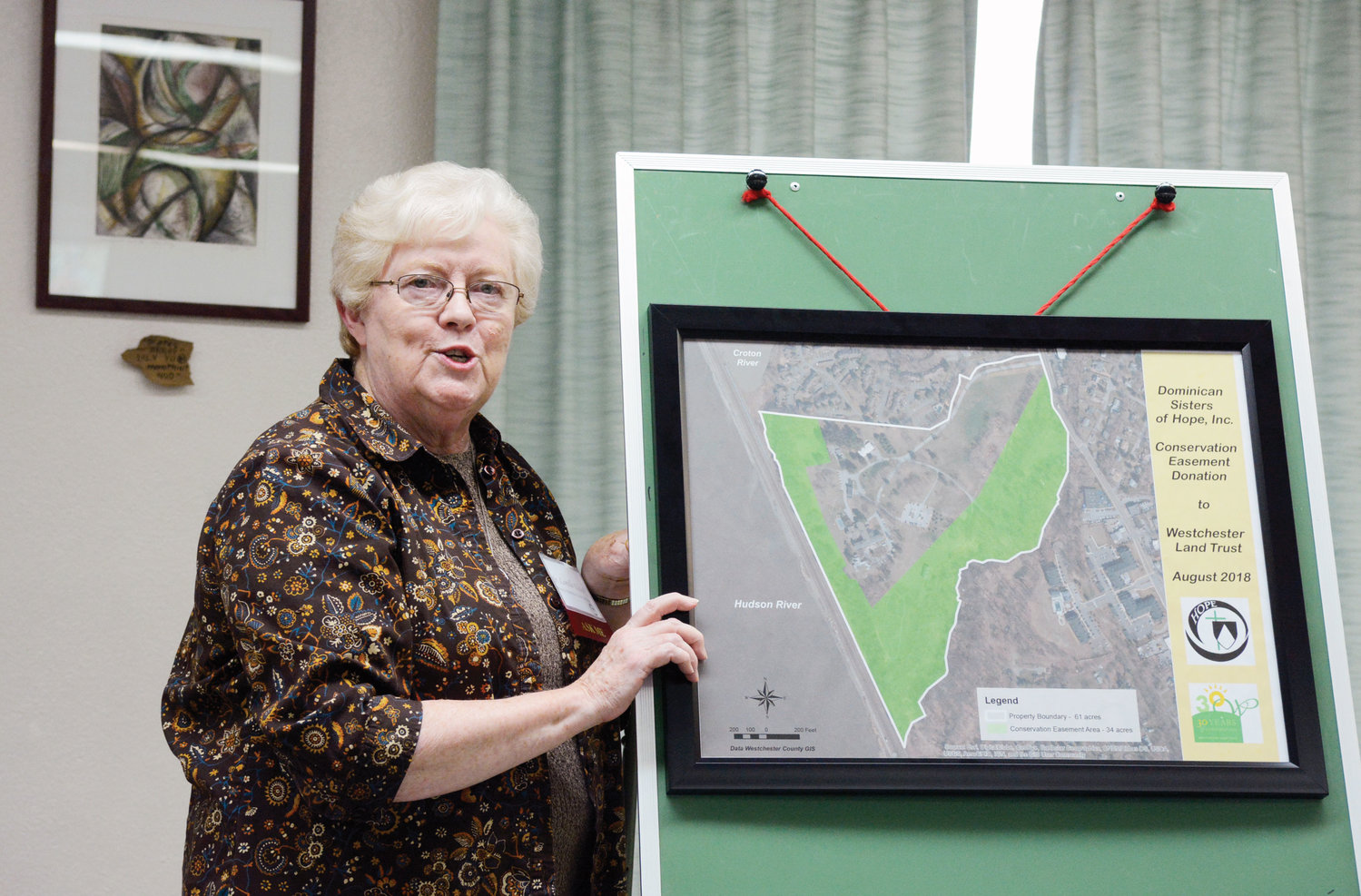The Sacred Community of Life
The Sacred Community of Life
By Kelly Dunlap
“We are gathered here on the banks of the beautiful Hudson River to reclaim our place in the sacred community of life,” Sister Monica McGloin explained to an audience of nuns, conservationists, members of the press, and civic and community leaders. “We remember the red-tailed hawks, the eagles…. forgive us for destroying your habitat. We remember the white pines, the hemlock…. forgive us for poisoning and contaminating the environment…. We’ve been called to prayer, we have sought forgiveness, now let us pay attention to how we protect and preserve this land and all that lives upon it.”
This reflective and prayerful introduction kicked off a 2018 press conference at Mariandale, a sixty-one-acre property in Ossining, New York, owned by the Dominican Sisters of Hope. The celebratory conference marked the end of a seven-year discernment and planning journey.
Dominican spirituality is built on four pillars: study, community, service, and reflection/prayer. In 2011, the sisters chose to focus their study on their relationship with creation and their ongoing call to be in communion with all of it.
This focus on creation stewardship spoke to an ongoing, practical question in their community. About 23 years earlier, three Dominican groups had merged to create the current community. The new configuration meant that the sisters now owned more land than they needed and they had been asking themselves what should be done with the unused acres.
The learnings and convictions that came from the stewardship study guided their discernment of how to be faithful stewards of the excess property. For instance, even though a portion of the land would have been a prime property for development, they rejected that option since it was inconsistent with their values.
While Catholic religious orders are rooted in historical practices, structures, and theology, the Dominican Sisters believe God calls them to consider the needs of future generations. They feel it their religious duty not only to love their neighbors today but to consider the wellbeing of future generations.
Sr. Lorelle Elcock, then-prioress of the Dominican Sisters, explained her conviction: “We have a responsibility to be in right relationship with Earth, not over it or owning it, but as part of it, caring for it.”
Pressing environmental concerns like climate change and the need for land conservation rose to the surface as a key concern for the community. As the sisters considered different ways to protect the land, they held exploratory dialogues with conservation organizations and religious communities, like the nearby Maryknoll Sisters who had pursued similar protections.
After much prayer, study and dialogue, they decided to seek a conservation easement for thirty-four acres of their property. A conservation easement is “an agreement between a landowner and a land trust that permanently restricts the development of a property.”
After discerning the best use of the land, the work of finalizing the conservation easement still required a great deal of logistical, financial, and legal planning. According to Sister Elcock, keeping their “faith-inspired values” at the forefront during the lengthy process kept the sisters on track.
After additional years of careful planning, the sisters celebrated the completion of the easement with a press conference. The decision would “protect [the land’s] significant ecological resources, forever.”
“Our hope is that in the future, this land will be a source of healing for body, mind and spirit, as well as a place of refuge for the wildlife,” said Sister Elcock.
The conviction that their legacy ought to be consistent with their mission and faith-inspired values led to a bold move that will bless future generations, but the sisters aren’t done planning for the future. They’ve already begun exploring what might be the preferred future for Mariandale and its retreat center when they’re no longer around. As gatherings of many kinds at the center moved virtual during the pandemic and some continue in that format, they recognize the world is changing quickly, and they want to be faithful stewards of all of their resources. Just as they learned from fellow religious orders who pursued land preservation, they’re learning from the Nones and Nuns’ Land Justice Project about ways their land and Center at Mariandale might continue to be further transformed into an agent of justice.
This story is part of Lake Institute’s story collection, the Faithful Generosity Story Shelf, which highlights congregations and other religious organizations who have sought to use their assets and resources in creative—and sometimes surprising—ways as an expression of faithful giving.
Each entry in our Story Shelf is short enough to be read and discussed during a committee meeting or other group gathering. Our hope is that these accessible vignettes will spark new questions, conversation, and imagination among clergy and laity about what might be possible with the funds, buildings, land, and other resources in their care. If you know a story that should be included in the Story Shelf, suggest it here.
Subscribe
Insights, a bi-weekly e-newsletter, is a resource for the religious community and fundraisers of faith-based organizations that provides:
- Reflections on important developments in the field of faith and giving
- Recommended books, studies and articles
- Upcoming Lake Institute events

